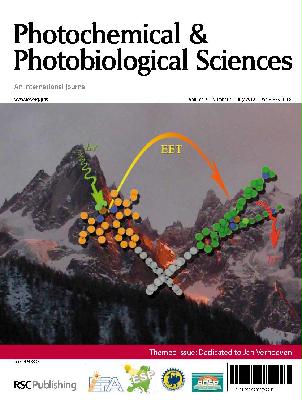Probing the interactions between disulfide-based ligands and gold nanoparticles using a functionalised fluorescent perylene-monoimide dye
le 1 juillet 2010
ENS Rennes
Publication dans la revue "Photochemical & Photobiological Sciences " à laquelle ont participé Julien Navarro et Martinus Werts
The binding of disulfides to gold nanoparticles was investigated using fluorescence spectroscopy and a perylene-monoimide dye coupled to a dissymmetric disulfide via a tetraethyleneglycolalkyl chain (PMImSS). Quantum chemical calculations using the polarizable continuum model (PCM) predict a strong quenching of perylene-monoimide fluorescence by gold nanoparticles as a result of efficient excitation energy transfer from the dye to the particle. Such quenching is indeed observed when unfunctionalised gold nanoparticles are added to a solution of PMImSS. The fluorimetric titration curves show behaviour indicative of the existence of an equilibrium between free and bound ligands (association constant 5 × 105 M-1), whereas the affinity of thiols and disulfide for gold surfaces is in general assumed to be much higher. Gold nanoparticles fully functionalised with PMImSS were synthesised and purified. Fluorescence correlation spectroscopy shows the appearance of free PMImSS ligands in dilute (approx. pM) suspensions of these PMImSS-functionalised nanoparticles over a period of several days.
- Thématique(s)
- Recherche - Valorisation, Vie des personnels
Mise à jour le 31 mars 2014
À télécharger
- Voir la publication PDF, 725 Ko







